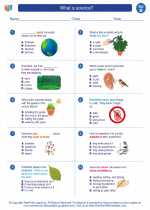Mantle
The mantle is a layer of the Earth between the outer core and the Earth's crust. It is a thick layer of solid and semi-solid rock that makes up the majority of the Earth's volume. The mantle is made up of silicate rocks rich in iron and magnesium, and it is divided into the upper mantle and the lower mantle.
Composition of the Mantle
The mantle is composed mainly of silicate minerals, such as olivine, pyroxene, and garnet. These minerals are rich in iron and magnesium, giving the mantle its characteristic density and composition. The upper mantle contains more olivine, while the lower mantle is dominated by high-pressure forms of olivine and other minerals.
Physical Properties of the Mantle
The mantle is in a solid state, but it can deform and flow over long periods of time, a process known as mantle convection. This convection is driven by heat from the Earth's core, causing the mantle to circulate and move the tectonic plates on the Earth's surface.
Role in Plate Tectonics
The movement of the mantle is a key factor in the theory of plate tectonics. As the mantle convection causes the tectonic plates to move, it leads to the formation of mountain ranges, earthquakes, and volcanic activity. The heat and pressure from the mantle can also cause the melting of rocks, leading to the formation of magma and the eruption of volcanoes.
Study Guide
- What is the composition of the mantle?
Answer: The mantle is composed mainly of silicate minerals, such as olivine, pyroxene, and garnet, rich in iron and magnesium. - How does the mantle contribute to plate tectonics?
Answer: The movement of the mantle causes tectonic plates to move, leading to the formation of mountain ranges, earthquakes, and volcanic activity. - What is mantle convection?
Answer: Mantle convection is the process by which heat from the Earth's core causes the mantle to circulate and move the tectonic plates on the Earth's surface. - What physical state is the mantle in?
Answer: The mantle is in a solid state, but it can deform and flow over long periods of time.
◂Science Worksheets and Study Guides Second Grade. What is science?

 Worksheet/Answer key
Worksheet/Answer key
 Worksheet/Answer key
Worksheet/Answer key
 Worksheet/Answer key
Worksheet/Answer key
 Vocabulary/Answer key
Vocabulary/Answer key
